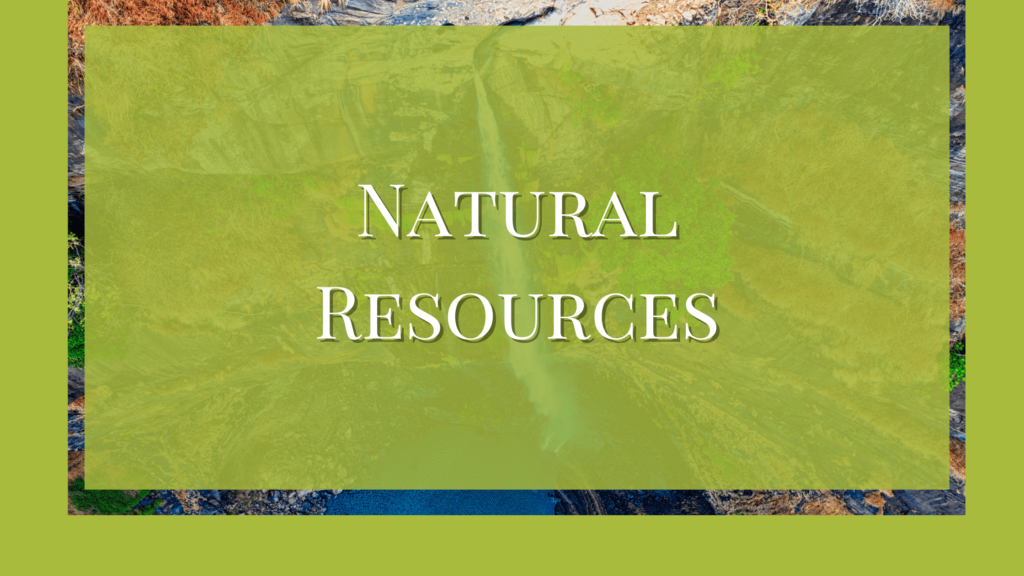The word resource refers to the means of supplying a material generally held in reserve. Natural resources are materials necessary for life and available in a normal environment. These include energy, air, water, land (soil), minerals, microorganisms, plants, and animals.
Natural resources are the substances required for our survival and comfort. These substances are obtained directly from the environment.
Types of Natural Resources
Based on chemical nature, natural resources are classified into,
- Inorganic materials such as air, water, and metallic minerals.
- Organic materials such as plants, animals, microorganisms, fossil fuels, etc.
- Mixture resources include soil that has both organic and inorganic components.
Natural resources are divided into two, based on their abundance and availability.
- Inexhaustible resources like air, clay, sand, tidal energy, and precipitation. These are not likely to be exhausted by human use.
- Exhaustible resources are likely to be finished by human usage. Such resources are further classified as renewable and non-renewable.
Renewable Resources
Renewable resources and non-renewable resources are two types of natural resources that are classified based on their availability and the rate at which they can be replenished.
Renewable resources can be replenished or regenerated relatively quickly. They are easier to maintain and cable replaces when managed wisely. Such resources include soil, water, and living objects like crops, forests, domestic animals, and wildlife. Some of these materials are constantly renewed in nature.
Renewable resources are generally considered to be sustainable because their supply is not depleted as they are used. These resources are not likely to be exhausted and are interlinked. But they must be well conserved.
Examples of renewable resources include solar, wind, and geothermal energy, hydropower, etc. Solar energy is derived from the sun, wind energy is harnessed from the wind, hydropower is generated from flowing water, biomass comes from organic matter such as plants and waste, and geothermal energy is obtained from heat within the Earth’s crust. These resources are continuously available and can be utilized without the fear of running out.
Non-renewable Resources
Non-renewable resources are natural resources that have a finite life. They cannot be easily replenished within a short span of time. They are those that, once used, will be lost forever as they are not replaceable. Once these resources are extracted and consumed, they cannot be replaced within a human lifetime or even over several generations
Non-renewable resources are typically formed at a much slower rate than they are consumed, making them unsustainable in the long term. These resources are formed over millions of years through geological processes and have a limited supply.
Non-renewable resources include metallic and non-metallic minerals like copper, gold, and iron ore or fossil fuels like coal, natural gas, and petroleum.
Challenges of Using Natural Resources
The extraction and use of non-renewable resources have negative impacts, such as air and water pollution, habitat destruction, etc., and climate change via greenhouse gas emissions. As a result, there is a growing need to turn to renewable resources to reduce dependence on non-renewable resources and reduce their environmental consequences.
The sustainable utilization of renewable resources is crucial for long-term environmental sustainability and reducing our dependence on non-renewable resources.
References
- Shukla, R.S. and Chandel, P.S. (2001) Plant Ecology. S. Chand and Company Ltd., New Delhi.
- Verma, P.S., Agarwal, V.K. (1999). Cell biology genetics molecular biology evolution and ecology. New Delhi: S.Chand Co.(Pvt) Ltd.
- https://scdhec.gov/sites/default/files/Library/OR-0689.pdf




